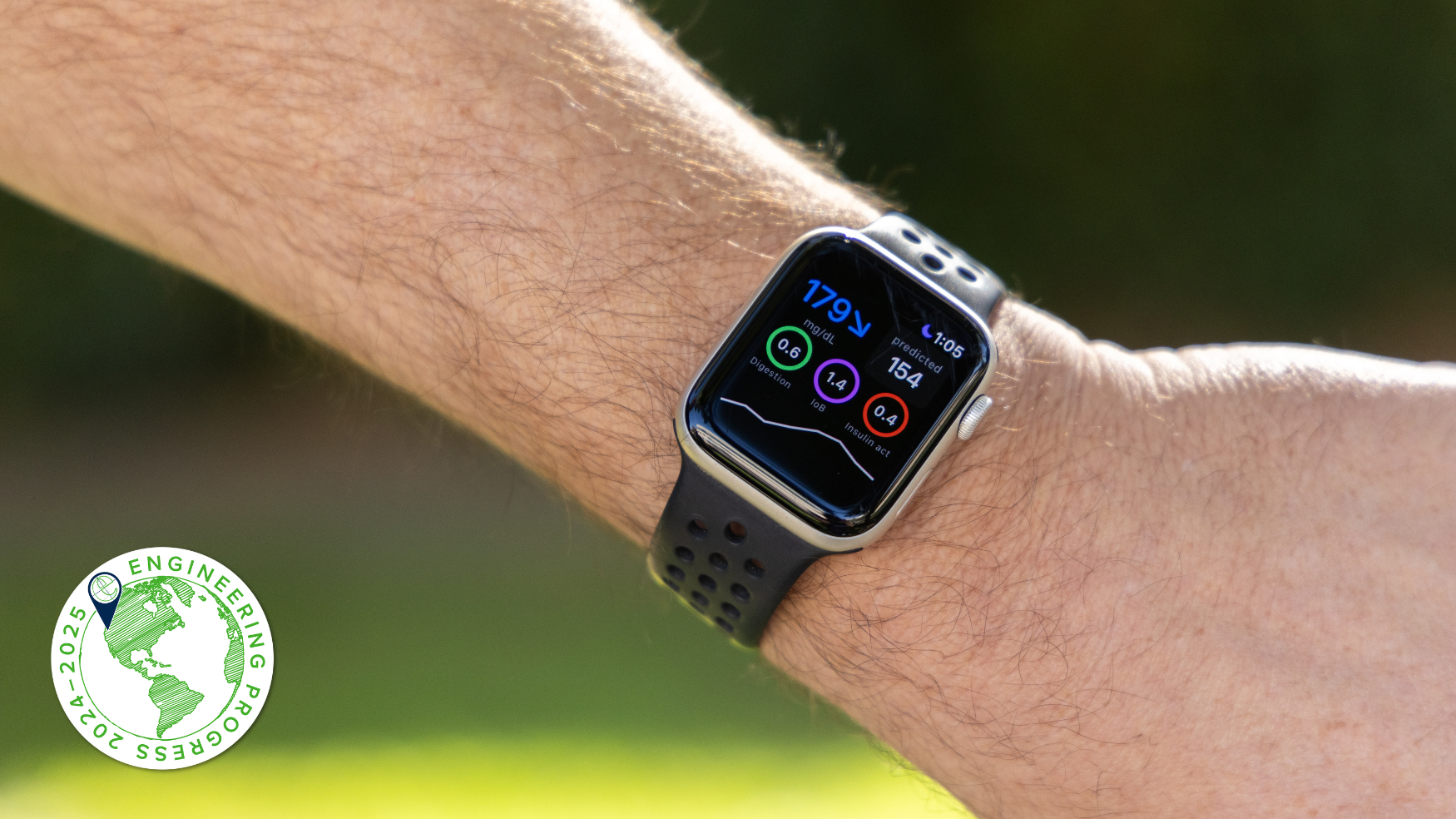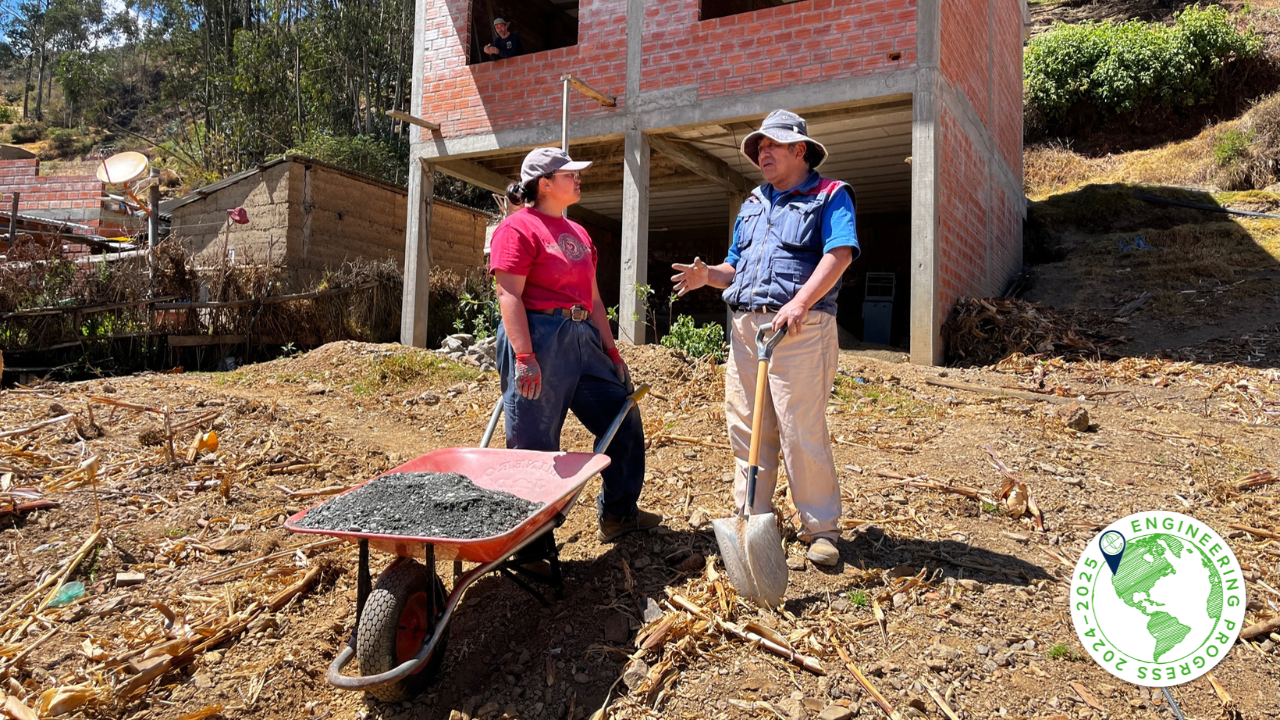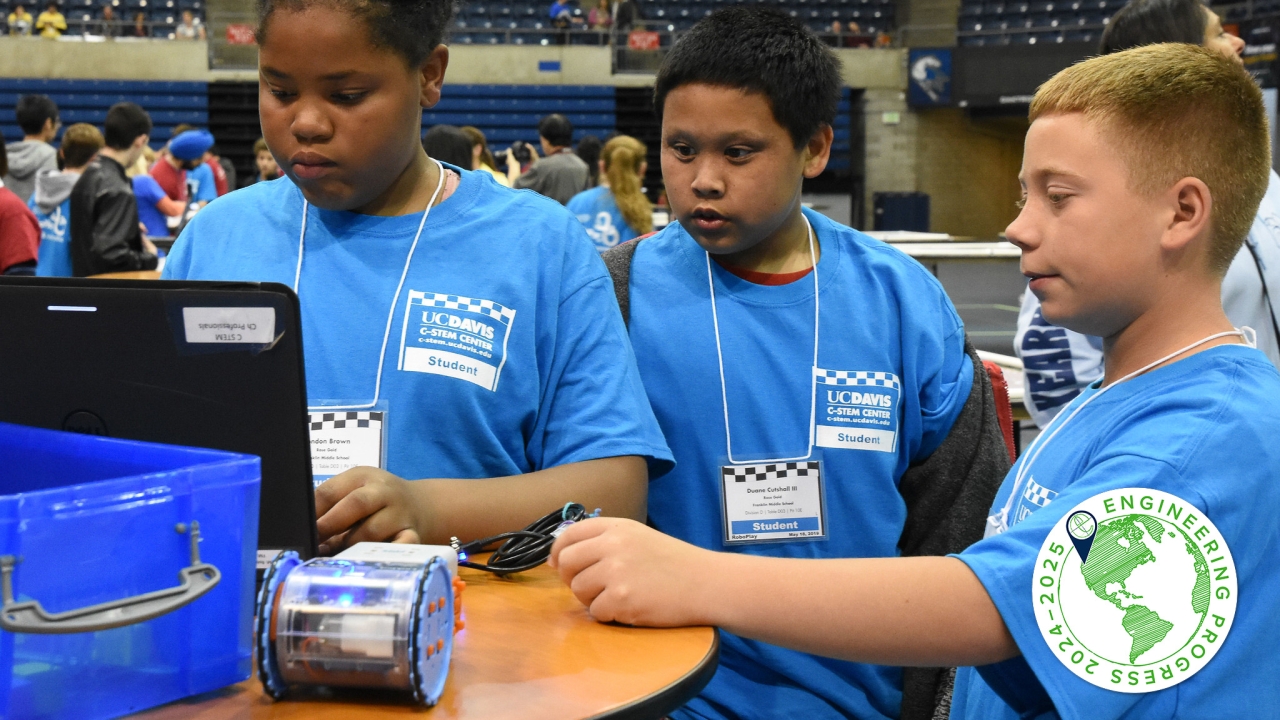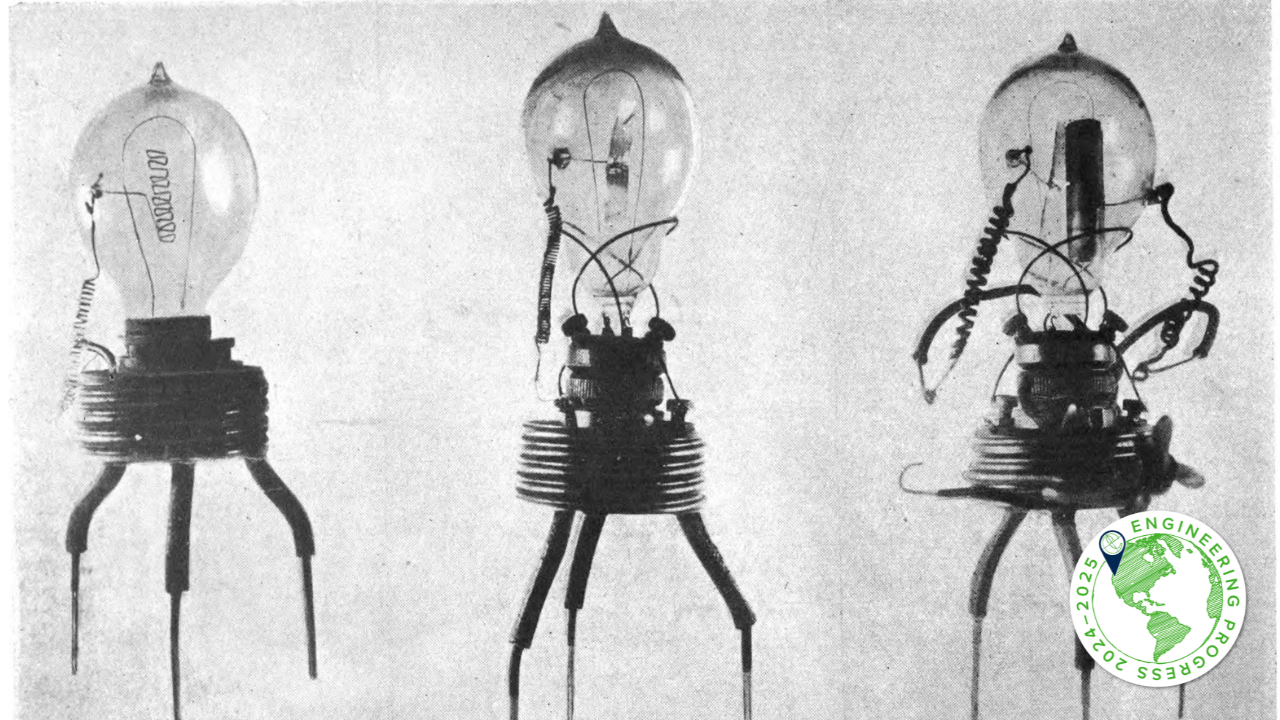With AI, a New “Metabolic Watchdog” Takes Diabetes Care from Burden to Balance
BeaGL is a new AI-driven diabetes-management tool that uses machine learning to send alerts to the user's smartwatch before insulin imbalance occurs. (Mario Rodriguez/UC Davis)
A solution for diabetes management could be a game changer for young adults living with the chronic disease

by Jessica Heath | Engineering Progress Magazine 2024-25
In 2015, Sam King's 9-year-old son was diagnosed with Type 1 diabetes.
King, who is now an associate professor of computer science at the University of California, Davis, was working in the tech industry at the time and recalls the experience of becoming a parent of a child living with a chronic condition as humbling.
"The daily burden of diabetes care is really amazing and extensive," says Stephanie Crossen, a pediatric endocrinologist, diabetes researcher and associate professor at UC Davis Health. "It's a constant mental drain if you want to do it well and get good results."
About 2 million Americans, including over 300,000 children and adolescents, live with Type 1 diabetes, or T1D, which is an autoimmune disease where the pancreas can't create its own insulin. Insulin is a hormone that helps blood glucose enter the body's cells to be used as energy.
People living with the condition have to constantly monitor their blood glucose levels — every time they eat, exercise or become stressed, they need to be on top of it to maintain balanced levels.

King said he felt like his family got a hold of the daily management, but there were still times, especially as his son became a preteen and teenager, when insulin was forgotten, or check-ins would fall by the wayside.
Then, a couple of years ago, King was diagnosed with T1D, and as he was attempting to integrate this new structure into his life, he noticed a gap in diabetes management technology, specifically continuous glucose monitors, or CGMs.
CGMs use a subcutaneous sensor that's replaced every seven to 15 days. The sensor is applied near the stomach or on the back of the upper arm and monitors glucose levels every five minutes. When glucose levels need to be adjusted, the patient is alerted.
"I noticed that by the time I would receive an alert, it was already too late. I was in glycemic imbalance, and I would have to hustle to correct it," said King. "I wanted software to give me a little nudge before things went badly so that I could do something to correct it."
Teaching a New Dog New Tricks
Enter BeaGL, or "metabolic watchdog," as King originally coined it. (King's research team came up with the name, feeling that a beagle seemed friendly and nonthreatening.)
BeaGL is designed to work with CGMs; however, BeaGL's software employs security-focused machine learning algorithms to make predictive alerts about anticipated glucose changes, which are sent to a device. In this case, a smartwatch.
The end goal is for BeaGL to be completely automated to reduce the cognitive load on the patient, particularly for adolescent patients. This is the time of life, says Crossen, who is co-principal investigator on the project, when diabetes management suffers the most.
"CGMs, insulin pumps, smart pumps — these have been amazing breakthroughs in diabetes technology in the last decade, but we haven't optimized the benefits for the young adult age group. There are a variety of reasons, but a big one is a lot of competing priorities paired with immature minds who are trying to figure out the strategies to manage their lives, let alone all these other tasks related to diabetes and device management." — Stephanie Crossen
King and Crossen are hoping that BeaGL, which is still in the research and workshopping phase, can help take some of the stress of management off young adults' shoulders. Since June of 2024, six UC Davis students with T1D have been using BeaGL, with promising results. They are receiving a lot of alerts from BeaGL, but the students overall have noted a decreased cognitive load.
King points to one student participant who does basic science research that involves a hood and a protocol for personal protective equipment, or PPE. If the student were to get an alert from a standard CGM, he would be at the point of glycemic imbalance, and he would have to shuck all his PPE, go take care of his glucose, come back, put back on the PPE, etc. BeaGL's predictive alerts gave him much more latitude.
"He was able to parse out, 'Okay, I've only got five minutes left on this experiment, and I've got 15 minutes until I go low. I'll finish the experiment, then I can go take care of it,'" said King. "Once people started to trust the system, they spent less time thinking about it because they were checking their numbers manually less often, and they knew the system was keeping an eye on it for them."

Another aspect of BeaGL that the students appreciate is the ability to customize alerts. That, King says, was tricky from a computer science perspective. In an effort to avoid alert fatigue, initially, he and his team implemented an algorithm to manage how often alerts were sent after the first alert. It ended up being too complicated and frustrating for the users, so the team let the users dictate when they receive follow-up alerts by pre-selecting intervals.
Integrating the students' feedback has been eye-opening, says King. For example, the sensor data used to be read on a cloud-based server, but one user went on a canoeing trip and was outside of cellular service, so now the data is analyzed locally on the phone. Smaller details include the text in the notifications — "You are going to reach glucose imbalance" switched to "Your glucose is going to reach imbalance" — and the alert logo went from an aggressive biohazard icon to a gentler puppy, aka a beagle.
A Glimpse into the Future of Healthcare
The technology is almost ready to go to market; King aims to start presenting it to the diabetes management industry this year. While BeaGL can be used by itself — meaning, the patient would just use it for alerts and inject insulin practically — as a low-cost management tool, King and Cross view it as one step toward a bigger endgame: a closed-loop insulin delivery system driven by artificial intelligence.
"It's the ultimate goal that the international diabetes community is working towards," said Crossen. "It would be a complete game-changer, especially for this adolescent and young adult age group, and it would allow these young people to function more typically and not have to be their own pancreas. It's hard to even quantify the potential of a system like that."
In this best-case scenario, BeaGL would read the blood glucose levels and dose insulin from a smart pump intermittently based on its readings and predictions. The user wouldn't have to check their blood glucose levels or input meals and exercise into a software.
Insulin, however, is a very dangerous hormone; there is no leeway for mistakes, so a system like that would have to be completely foolproof and need to go through multiple trials, receive FDA approval and go through every step of red tape.
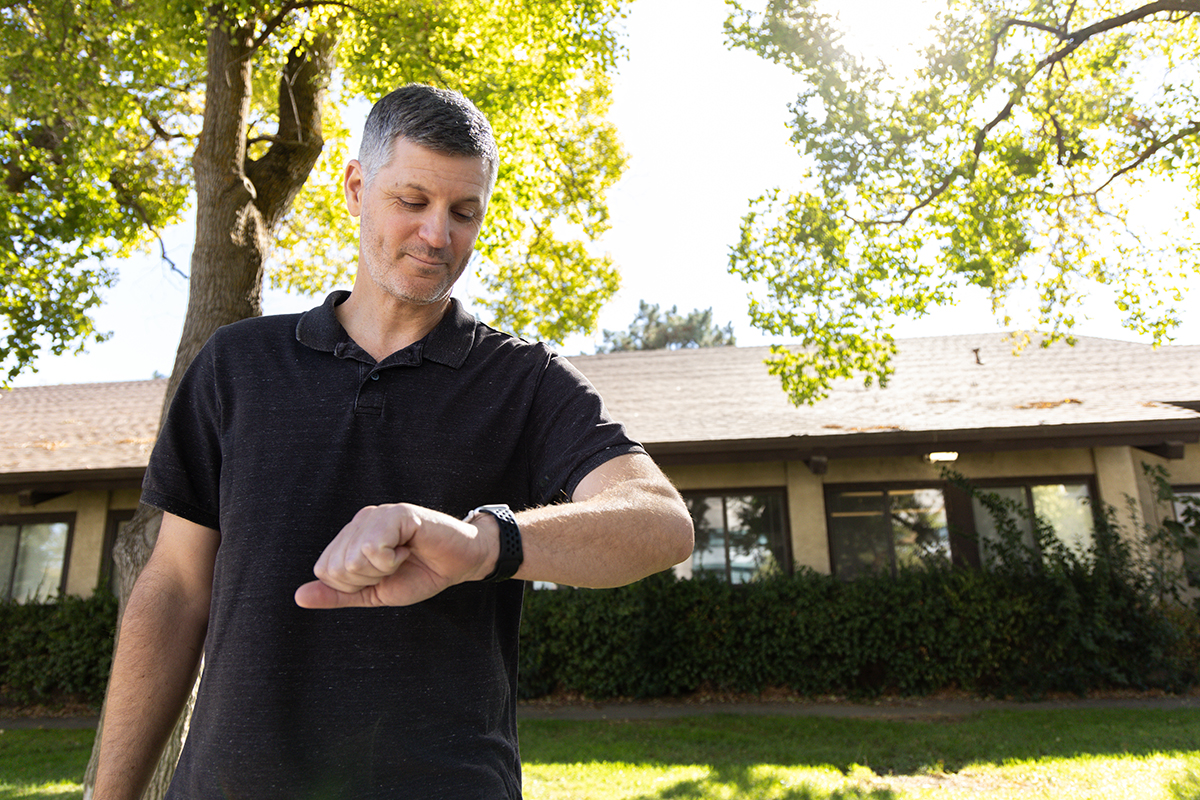
King does have an early-stage model for a closed-loop system that doses insulin, and it has been used by one individual, referred to as Bob in the research. ("That's me," said King. "I'm Bob.") The results so far have been positive and promising.
For King and Crossen, BeaGL is not only the promising first step towards that holy grail of a fully automated insulin delivery system; it could be the beginning of a type of AI-driven healthcare that has infinite possibilities.
"What we're looking at is an extreme version of distributed health care driven by AI," said King. "We're making health predictions on behalf of humans every five minutes using AI, and we're providing a glimpse into the future of healthcare. The principles that we learned from doing this are going to be applicable to a lot of other areas, and I think that the potential for this is unlimited."

This article was featured in our 2024-2025 digital edition of Engineering Progress Magazine. Read more stories.

